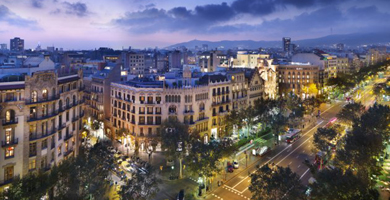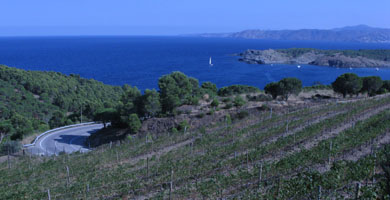Northern Spain's Basque Delights
The Basques have had a bad press for the violence of ETA, a murderous bunch of separatists, but that movement seems to be fading away, as has the IRA in Ireland, and the shootings have rarely impacted visitors. Historically, there is a case for autonomy, for even the Romans and Moors stayed clear of this isolated province, and the language sounds more like Hungarian than Spanish. Frank Gehry’s Bilbao Guggenheim has drawn millions of art lovers to that former industrial city, but few stay on to enjoy the green and pleasant land beyond.
An ideal base from which to explore the quiet delights of the Basque Country is Iriarte Jauregia, a 17th-century stone house transformed into a 19-room hotel. The owners, Iban Munoa and Lorena Arco, inherited a decrepit relic from his parents and lovingly converted it into an oasis of comfort and understated style. There’s a clever mix of new bathrooms and antique furniture, and you can sleep in a four-poster beneath the original attic beams by requesting a room on the top floor. Gaze out from your window over the village of Bidania, and the fields and mountains that surround it. It feels completely cut off from the world, but there’s a freeway close by that will speed you to the resort city of San Sebastian in half an hour.
There, you can laze on a beach, have a leisurely lunch at Arzak, one of Europe’s finest restaurants with its three Michelin stars, or stroll among the grand Beaux Arts buildings that accommodated smart travelers a century ago. A Madrid architect has transformed the San Telmo Museum, adding planes of perforated aluminum that sprout greenery to the masonry of an old monastery. Within are fascinating displays on Basque history and culture, and the café, opening onto an expansive plaza, is perfect for a light lunch. To the south of the old city is the Iglesia de Riberas de Loiola, a new church by the Pritzker Prize laureate Rafael Moneo. As a non-believer, my only interest in churches is their architecture, and this is a gem: a white cube suffused in light from a cross in ceiling. The acoustics are fantastic; I would love to hear plainsong there.
You can continue on to the old town of Hondarribia, and over the French border to the venerable resorts of St Jean de Luz and Biarritz, or head south to Pamplona, the historic capital of Navarre. You could spend a day there, but don’t plan on a fast trip during the Festival of San Fermin, July 7-14. That’s when the bulls are run through the streets, and wannabe Hemingway’s leap into their path. Every room is full, every parking space taken, but for a front row seat at the bloody spectacle, Pamplona Balconies offers a set of penthouse balconies you can rent to view the action from a safe distance.
Most guests prefer to stay close to home. Iban Munoa recommends a day trip to Zumaia (for its rock formations), Getaria (for Gothic architecture, grilled fish, and a white wine called Txakolin), Zarautz for its beaches, and Tolosa for its old streets. Or you could hike up into the mountains of Aralar and Aranzazu, stopping along the way in stone villages where nothing but Basque is spoken. After a day on the road or the trail it’s a joy to return for a drink in the garden at sunset and a good dinner in the hotel restaurant. Though the rain in Spain falls mainly in Euskal Herreria as the locals call it, you’ll be spared the heat and sweaty crowds of better known destinations.
Michael Webb
around the world.
Latest posts by Michael Webb
- DESTINATION: Revisiting the South of France - April 30, 2024
- Exploring the Czech Republic - January 29, 2024
- Rediscovering Morocco - April 6, 2022











I went to the Basque Country for eleven days in June and absolutely loved it.
My boyfriend and I stayed in Bilbao for four nights and then in San Sebastian for six, using both cities as a starting point to explore the area by car.
We especially loved Hondarribia for the peacefulness and Getxo for the beautiful houses along the seaside and the vibrant atmosphere in the evenings.